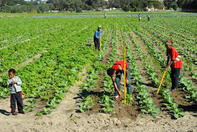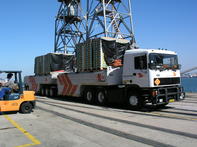Expectations of the Agricultural Sector
The agricultural sector is expected to be all things to all people. It has to prop up a nation’s or a region’s food security, and it is expected to provide jobs, alleviate poverty and lubricate economic development.

The world’s growing population also expects farmers to keep pushing up production in spite of leached soils and extreme weather events, as well as the rising cost of oil and shaky global geopolitics increasing the price of farming inputs such as energy-intensive fertilisers, diesel and petrol.
In spite of this, Farmer Brown is expected to be sustainable, not strip the environment too much (think: water extraction, soil use) or overburden other services from the ecosystem (think: the waste-absorbing action of rivers and wetlands which flush away fertilisers that wash off fields into rivers and over-nitrify the system; or the atmosphere that is expected to mop up all the methane, nitrous oxide and carbon dioxide that is released by various agricultural processes, such as cow rumination, firing up the engine of a tractor or turning soil over with a plough and exposing the bacteria to the atmosphere).
Agriculture Working as Part of the Green Economy
Agriculture is part of the climate problem. It accounts for 30% of global greenhouse gas emission. According to the Food and Agriculture Organization (FAO), it is responsible for about 70% of water extraction globally, and it is a massive driver of landscape change such as clearing of rainforests.
But it can also be part of the solution in terms of how societies need to start confronting various environmental and poverty crises. We need to think about how agriculture can work in the context of the green economy of the future, rural development consultant Dr Christoph Trusen said at a meeting in Cape Town in December 2011 as part of a discussion on food security and the role of urban agriculture.
‘The United Nations Environment Programme defines a green economy as one that results in improving human well-being and social equity, while reducing environmental risks and ecological scarcity,’ he said. ‘In its simplest expression, a green economy can be thought of as one which is low carbon, resource efficient and socially inclusive.’
Mobilising the Agricultural Sector

The agricultural sector can be mobilised to increase food security while using fewer natural resources, through making the food value chain much more efficient, says Trusen. This means making the production process more resource-efficient, and reducing the amount of waste along the full value chain.
But improved efficiencies in the food chain should not come at the expense of the system’s resilience, in terms of how food flows into cities. There should still be diverse ways – multiple pathways – for getting food into the city, so that if one route fails (say, a key road or railway line is washed away during a severe flood), other routes can still operate to feed the city.
It can be deployed as a poverty-reduction measure. According to the FAO, the agricultural sector accounts for about 40% of the global workforce, and ploughing money into agriculture has far greater returns in terms of poverty reduction than investing in non-agricultural activities, says Trusen.
Reducing the Carbon Footprint
Its carbon footprint can also be reduced by shortening value chains – reducing the distances between field and fork – and adopting climate-friendly farming methods such as no-tillage agriculture and cutting back on artificial fertilisers.
An intensive analysis of the carbon footprint of products throughout their life cycles, to see where the critical carbon-intensive points are, will also force change, either by helping conscious consumers to steer clear of carbon-intense products, or encouraging food producers to problem-solve their way out of high-carbon production lines.
Take the case of coffee grown in West Africa and served up in Germany. You might think that the bulk of its carbon footprint would lie in shipping the beans from one continent to another. Not necessarily so. A study showed that 40% of the coffee’s carbon footprint lay in the fertilisers used by farmers to grow the crop, and another 30% lay in the brewing of the cup of coffee itself.
The coffee machine is an energy-hungry beast, sucking up large amounts of power in exchange for a relatively small amount of coffee at the other end, according to Trusen. That leaves surprisingly little carbon footprint to be accounted for by transportation of the beans from one continent to another, or roasting, packaging and the like.
Keeping the Chain Working Efficiently

One billion people still live in hunger. Keeping the top of the food value chain working – efficiently, greenly, productively – is the first step in keeping a region food secure.
The Global Alliance for Improved Nutrition (GAIN), which focuses mainly on getting good nutrition to children, also weighs in on the importance of improving the efficiencies of the top of the food value chain, arguing for ‘sustainability, quality and security of food production and distribution systems’.
There needs to be greater focus on using improved inputs and infrastructure, ‘including new seeds, technologies, fertiliser, and equipment’. Agricultural methods and practices need to be upgraded, particularly with regard to the management of soil and water. Value chains – everything that happens to food from the germination of the plant on the farm, to how it gets to the consumer’s plate – need to become more efficient and, where possible, localised. Market mechanisms need to be strengthened and there needs to be improvement of ‘food and agricultural trade policy’.
By Leonie Joubert